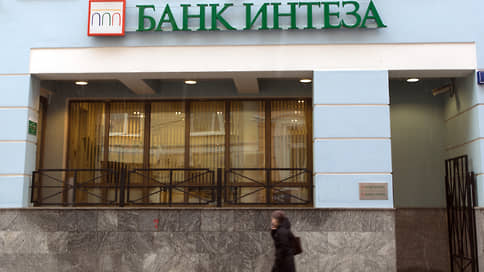Profit will not decrease – Newspaper Kommersant No. 43 (7488) dated 03/15/2023
[ad_1]

Of all the bank statements published to date, the most dynamic growth in profits was demonstrated by a small bank with Italian roots – Intesa. Its financial result increased by 6.4 times compared to 2021. The former leader, Raiffeisenbank, increased profits in the crisis year 2022 by 4.4 times. Foreign banks are improving financial performance against the backdrop of reducing their presence in the Russian market. However, it is now difficult to transfer record profits to parent structures.
Another foreign bank that disclosed the results of last year under RAS was Intesa (67th in terms of assets at the beginning of 2022). He managed to sharply increase profits – almost 6.4 times, to 2.02 billion rubles. The bank’s assets for the year increased by 43 billion rubles, up to 135 billion rubles, and net loan debt – by almost 19 billion rubles, up to 100 billion rubles. But risk-weighted assets halved to RUB51.9bn. Net interest income (before provisions) increased by 1.8 times, to 4.5 billion rubles, net commissions decreased by almost 21%, to 0.9 billion rubles.
Russian history of the group Intesa Sanpaolo began in 1973, when the State Bank of the USSR issued permission to Banca Commerciale Italiana to open a permanent representative office in Moscow, which became the first in the USSR. The current bank “Intesa” was formed in early 2010 as a result of the merger of two subsidiary banks of the Intesa Sanpaolo group – KMB-bank and CJSC “Bank Intesa”. The Intesa Group took part in major Russian projects, in particular the construction of the Nord Stream, as well as the privatization of Rosneft in 2016.
The presentation of Intesa Sanpaolo to the financial results of the group for 2022 notes that in just six months, lending in Russia was halved (loans to customers minus reserves were reduced to €0.2 billion), as well as cross-border risks per country – by 70% (to €1 billion). According to the group, the risks assumed on Russian counterparties included in the SDN list are estimated at €0.4 billion. In addition, at the beginning of October 2022, the sale of loans issued to Russian customers for €0.4 billion was completed.
According to independent expert Olga Ulyanova, under cross-border risks assumed by Russia, the group may mean loans issued to Russian customers, but which are on the balance sheet of the parent group. The growth of assets is the result of the influx of client funds, which were further placed in credit institutions, the expert notes.
“It can be assumed that in the first half of the year, when rates on the Russian money market rose sharply, the bank experienced a significant influx of funds from new customers. Liabilities could hypothetically be placed in loans, but since the group has taken a course to reduce lending in Russia, the clients’ money remained in liquid form, ”the expert notes. This could contribute to “a significant increase in the interest income of the Russian subsidiary of the group, because the attraction rates in the first half of 2022 were high,” Olga Ulyanova believes.
Independent expert Alexei Nechaev clarifies that the item “funds in credit institutions” of the published balance sheet includes correspondent accounts, while the item “net loan debt” reflects loans to individuals and companies, as well as interbank loans and deposits, including deposits with the Bank Russia. Since net debt increased and assets at risk declined sharply, it can be assumed that in the first case, the increase occurred due to the placement of Intesa’s funds on deposits with the Central Bank of the Russian Federation, which have a zero risk factor. At the same time, the “usual” loan portfolio of Intesa, most likely, has been heavily repaid. This is similar to the winding up of the bank’s business, Mr. Nechaev agrees.
However, as before, all the profits of foreign banks remain inside Russia. Mikhail Alexandrov, partner at A2 law firm, notes that there are restrictions on the distribution of dividends to accounts in unfriendly countries. Therefore, until they are withdrawn, the earned profits of banks will remain inside Russia, he points out. In addition, the sale of the bank is also complicated, since it is on the list of 45 banks requiring permission from the President of the Russian Federation.
[ad_2]
Source link





